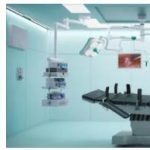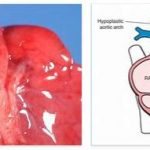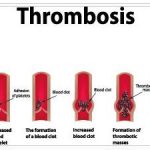The term nerve compression syndrome summarizes disease symptoms that lead to functional limitations or total loss of function due to chronic pressure damage to peripheral nerves at certain passage points and bottlenecks. More than ten different bottlenecks in the human body are known that can lead to a corresponding nerve compression syndrome with sometimes very painful and serious consequences. The functional restrictions are reversible as long as the chronic pressure load has not yet caused any permanent anatomical changes or lesions of the nerve.
What is nerve compression syndrome?
Nerve compression syndrome is a functional impairment of one or more peripheral nerves that is caused by sustained physical pressure on the nerve. In most cases, natural constrictions between two muscles or ducts in joints and bones are affected, in which blood vessels and tendons usually also run in addition to the nerves. See phonecations for All You Need to Know About Polio.
Well over ten different neuralgic sites are known at which nerve compression syndrome can occur, which can affect sensory and motor impairments. The sometimes very painful impairment of function or the total loss of function of the affected nerve is caused by sustained physical pressure because the surrounding tissue swells and takes up space due to inflammatory processes or other reasons.
As long as the sustained compression does not permanently damage the nerve, such nerve compression syndrome is partially or fully reversible. In principle, blood vessels running parallel to the nerves can also be affected, so that the transmission of arterial or venous blood can be disturbed.
Causes
There are a variety of causes and causal complexes that can lead to nerve compression syndrome. At narrow, bony passageways, such as the carpal tunnel where the forearm meets the wrist on the flexor side of the hand, overuse can trigger an inflammatory response that can cause surrounding structure to swell and compress the median nerve.
It is then the quite common carpal tunnel syndrome. In some cases, degeneration or new tissue formation in the bony structure, such as so-called ganglia, can also exert pressure on the nerve due to spatial stress. Nerve compression syndrome can also develop from building muscle too quickly.
This occurs when nerves are compressed as they travel between muscles due to the spatial demands of rapidly growing muscles.
To a certain extent, a corresponding genetic disposition can also favor the development of nerve compression. This is always the case when other cases of nerve compression are known within the family.
Symptoms, Ailments & Signs
In the case of an emerging nerve compression syndrome, which is still in the early stages, the sensors are usually the first to be affected. This means that numbness and other sensory deficits manifest, which can be accompanied by tingling on the skin (pins and needles). Motor disorders usually only appear with increasing compression of the nerves.
The sensory and motor disorders can be accompanied by significant pain. In extreme cases, the innervated muscle parts fail completely because the motor nerve fibers can no longer send contraction signals to the muscle cells. Loss of strength and rapid breakdown of muscle tissue are symptomatic of motor disorders. The resulting limitations in movement depend on the location of the nerve compression syndrome.
Diagnosis & course of disease
Most nerve compression syndromes can be recognized from the patient’s symptoms (anamnesis). A check of muscle strength and tests of touch sensations such as sharp, dull, cold, hot and the like are available to confirm the diagnosis. In many cases, measuring nerve conduction velocity is useful.
The course of a nerve compression syndrome depends on how the constricting structures develop. If the tissue that is causing the compression is inflamed, nerve compression syndrome can resolve on its own after the inflammation and tissue swelling have resolved. In most other cases, if left untreated, irreversible damage to the nerves occurs, leading to permanent failure and degradation of the innervated muscle groups and permanent sensory impairments.
Complications
Complications arising from nerve compression depend on the severity of the compression of the nerve and the causative factors. If compression of the affected nerve resolves with or without treatment and the nerve is not already irreversibly damaged, nerve compression syndrome can resolve completely with recovery of original motor and sensory abilities.
Tendons or ligaments, which can become inflamed and then swell themselves, often run through the bottlenecks for the physical passage of nerves and blood vessels. The surrounding tissue may also be affected, such that the initial constriction results in compression of the sensitive nerves, typically causing nerve compression syndrome.
If left untreated, the motor or sensory nerve can be irreversibly damaged such that the symptoms of impaired sensory sensations such as numbness and restricted motor function do not regress despite the nerve compression being relieved. Naturally, there are about ten different passage narrowings – mostly near joints – known from which a nerve compression syndrome can emanate.
In individual cases, nerves can also be compressed outside of the known constrictions. For example, nerves that pass through two or more muscle groups can be pressed by the muscles in such a way that a nerve compression syndrome can develop. If left untreated, there is a risk of irreversible sensory and motor deficits.
When should you go to the doctor?
Numbness or sensory disturbances are signs of an existing irregularity that should be examined by a doctor. If there are abnormal sensations, hypersensitivity to touch or tingling on the skin, the affected person needs a medical clarification of the symptoms. A decrease in physical performance, lower resilience and mobility restrictions must be presented to a doctor.
In some cases, the symptoms spread further or lead to a total loss of functions. A doctor is needed so that the cause can be clarified and a treatment plan can be drawn up. If the muscular system is impaired, the disease is already advanced. Pain, a stiffening or a relieving posture of the musculoskeletal system indicate the need for medical care. Poor posture, improper stress on the body and swelling should be discussed with a doctor.
If joints can no longer be stretched or buckled as usual, there is cause for concern. A doctor is needed to ensure that no permanent health damage occurs or secondary diseases develop. A doctor should be consulted if there is unsteady gait, an increase in minor accidents or falls, or emotional abnormalities. Anxiety, mood swings, rapid changes in behavior or a withdrawal from social life are often underlying diseases that require treatment.
Treatment & Therapy
A nerve compression syndrome is always based on a primary disease that has been identified as the cause of the symptoms. Treatment is therefore primarily aimed at eliminating the causes of the compression. Possible therapies cover a wide spectrum. Therapy can be a simple instruction to change a habit or it can require surgery.
For example, a watch strap that is too tight can cause a so-called Wartenberg syndrome, a pressure lesion in the radial nerve (radial nerve) on the extensor side of the wrist. While taking off the watch or a less tight bracelet can solve the problem in this case, the affected joint regions are often immobilized with splints or bandages.
As a last resort, conventional or minimally invasive surgical interventions are considered if the desired improvements cannot be achieved with conservative treatment methods. The ultimate goal of any surgical procedure is always to relieve the pressure on the nerve in question so that it can regenerate. With the regeneration of the nerve through decompression, the symptoms also disappear.
Outlook & Forecast
Nerve compression syndromes can be treated surgically. The nerve usually recovers completely if the damage has not been present for too long. The prognosis also depends on the type of nerve compression. Carpal tunnel syndrome can be treated effectively both surgically and with various self-help measures. The Loge de Guyon syndromecan already be treated by immobilising the wrist using a suitable splint. Medication can provide additional relief from symptoms. The quality of life is particularly restricted during the acute pain phase. Once the nerve compression syndrome has been surgically corrected, the symptoms also disappear. In most cases, this results in complete recovery of the nerve.
A full load is only possible again after a few weeks. Until then, various limitations may arise for the patient. If nerve compression syndrome is treated early, the prognosis is relatively good. If the nerves are clearly damaged, deficits can persist. The patient may then be damaged for a lifetime and suffer from persistent pain, restricted mobility and nerve disorders. Life expectancy is not limited by the condition. The exact diagnosis must be made by a specialist in nerve diseases or the responsible surgeon.
Prevention
Preventive measures to minimize the risk of developing nerve compression syndrome mainly relate to a critical observation from time to time of one’s habits that could lead to nerve compression. This includes, for example, habits such as supporting your left elbow on long car journeys or constantly supporting your hand on the edge of the table when using the computer mouse. Such considerations are particularly important when the first signs appear, so that changes in unfavorable habits can prevent the syndrome from getting worse early enough.
Aftercare
Follow-up care for nerve compression syndrome is particularly important for two reasons. On the one hand, it is important to support the regeneration of the stressed nerves in the best possible way. On the other hand, avoiding incorrect posture should prevent renewed compression of the sensory nerves.
Incorrect loading and incorrect posture as common causes are important issues in the context of efficient aftercare. In this context, attention must be paid to ergonomics at the workplace as well as to healthy posture and movement sequences in everyday life. In addition to the treating neurologist, orthopaedist or family doctor, help and advice is also available from the physiotherapist or rehabilitation sports teacher. Occupational health advice is also often very helpful.
The muscular balance in the body and the reduction of imbalances play an important role in aftercare. Strengthening weak muscles (e.g. in the abdomen or upper back) is just as important in this context as stretching tight muscles, which often affect the chest area or hamstrings. Tension can also be relieved with targeted massages.
A back-friendly position in bed is also important for patients with diagnosed or treated nerve compression syndrome. When buying the mattress, it must therefore be tailored exactly to what the patient’s cervical, thoracic or lumbar spine needs for nerve-sparing positioning of the patient.
You can do that yourself
Nerve compression syndrome is a symptom that in many cases is accessible to the affected patient for self-help. Since the constriction of the nerves in the spinal canal of the spine (lumbar, thoracic or cervical spine) is often caused by incorrect posture or overuse, a corresponding change in behavior can also help to alleviate or even eliminate the pain, tingling or numbness remove.
In order to ensure that exercises or postures are really good for the patient, self-help in everyday life should be discussed with the treating doctor or physiotherapist. The basics for targeted training or healthy postures are often also learned as part of rehabilitation, in physiotherapy or in a special back school.
There are basically two ways to relieve nerve compression syndrome in everyday life. On the one hand, this is possible because a gentle posture is repeatedly adopted in order to relieve the affected areas. An example of this is the stepped positioning with regard to the lumbar spine. The second way is to strengthen weak muscles and stretch shortened muscles. In this way, muscular imbalances are corrected and the body is straightened into its physiological position. This is the posture in which the pressure on the spinal discs is minimized to the greatest extent possible, preventing nerves from being pinched by spinal disc tissue.








